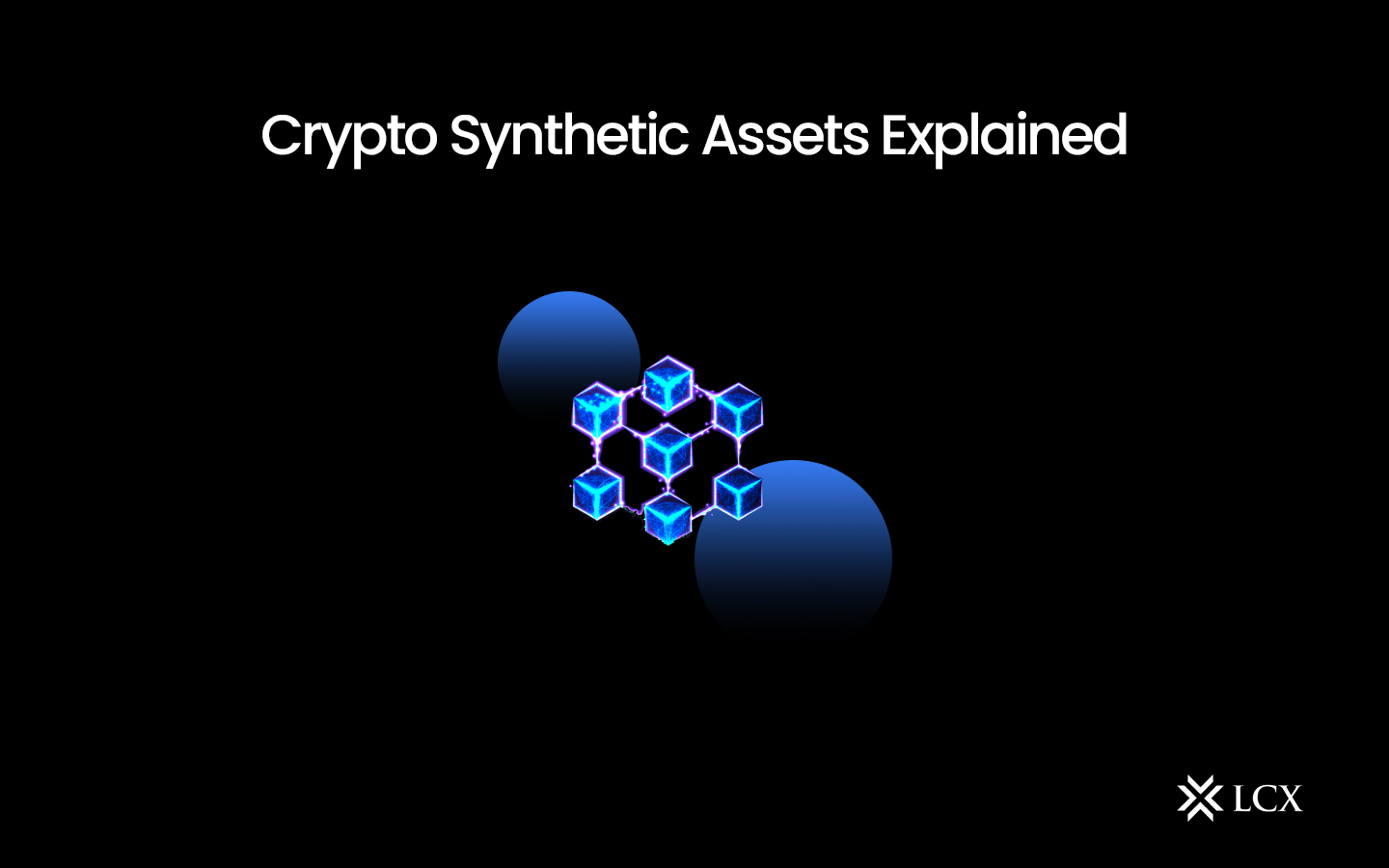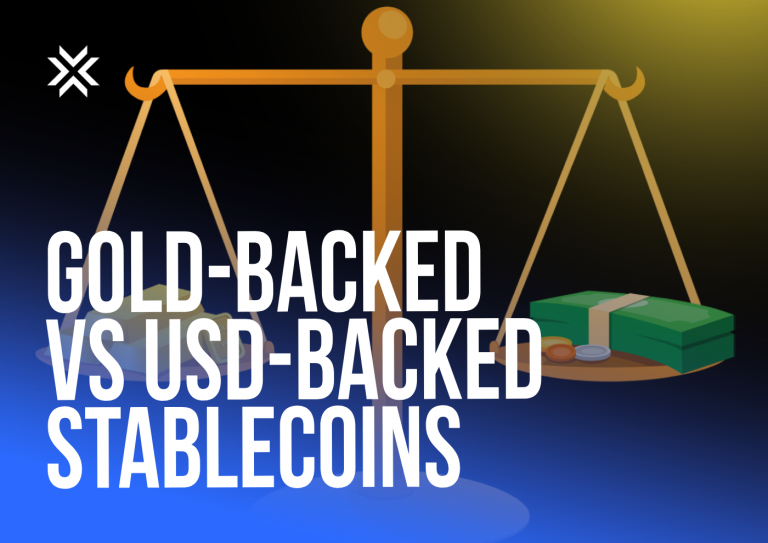What Are Crypto Synthetic Assets?
Crypto synthetic assets are blockchain-based financial instruments that mimic the value and behavior of actual assets and financial instruments. Crypto synthetic assets, also known as “synthetic assets,” are a class of digital financial instruments designed to mimic the value and performance of actual financial assets or real-world assets, such as stocks, commodities, currencies, and even other cryptocurrencies, without actually owning the underlying assets.
Using sophisticated financial derivatives and smart contracts on blockchain platforms, these artificial assets are created, primarily in decentralized finance (DeFi) ecosystems. Important characteristics of crypto synthetic assets include the ability to create decentralized smart contracts on blockchain systems like Ethereum, use collateral to secure value, precisely track target asset prices, and create flexible leveraged or derivative products.
Customers of DeFi now have access to more financial markets and assets, reducing their reliance on traditional intermediaries. However, users should exercise caution, as these instruments add complexity and risk, necessitating a comprehensive understanding of their underlying mechanisms and effects on investment strategies.
Traditional vs. Crypto Synthetic Assets
Traditional assets are tangible or monetary items traded on established financial markets, such as equities, bonds, and commodities. Crypto synthetic assets, on the other hand, are digital representations based on blockchain technology that are designed to mimic the value and performance of conventional assets.
Traditional assets are tangible or paper-based, whereas crypto synthetic assets exist solely in digital form on blockchain networks. Despite the fact that crypto synthetics have advantages over traditional assets in terms of accessibility, liquidity, and programmability, they come with their own risks and complexities.
| Traditional Assets | Crypto Synthetic Assets | |
| Nature | Physical/Financial | Digital |
| Market Accessibility | Conventional | DeFi Ecosystem |
| Ownership | Physical Ownership | Digital Ownership |
| Liquidity | Limited | High Liquidity |
| Programmability | Limited Control | Smart Contract Flexibility |
| Regulatory Oversight | Stringent | Evolving Regulation |
| Custodial Requirements | Often Required | Variable |
| Counterparty Risk | Centralized | Decentralized |
| Transparency | Varies | On-Chain Transparency |
| Asset Variety | Limited Range | Wide Range of Assets |
| Accessibility To All | Limited Access | Global Access |
Types of Crypto Synthetic Assets
Crypto synthetic assets appear in various forms, like synthetic stablecoins, tokenized commodities and equities, leveraged and inverse tokens, and yield-bearing synthetic assets.
Synthetic stablecoins
Synthetic stablecoins are digital tokens designed to replicate the value and stability of fiat currencies, such as the United States dollar or the euro. They provide a method for exchanging products and services and storing value in the cryptocurrency ecosystem without being subject to the volatility of cryptocurrencies. Developed on the Synthetix platform, sUSD is an example of a synthetic stablecoin. It seeks to provide users with access to a stable digital currency whose value corresponds to that of the U.S. dollar.
Tokenized commodities and equities
On blockchain networks, tokenized commodities and equities serve as digital representations of physical assets such as gold, oil, stocks, and other commodities. These synthetic assets enable the fractional ownership and exchange of conventional assets in a decentralised manner. sOIL, which is also developed on the Synthetix platform, is an example of a synthetic asset that monitors crude oil prices. Without actually possessing any oil, investors can become more exposed to price fluctuations.
Leveraged and inverse tokens
Synthetic assets, known as leveraged and inverse tokens, are developed to amplify or counteract the price changes of an underlying asset — inverse tokens profit when the underlying asset’s price decreases, while leveraged tokens magnify profits and losses. For example, BTC3L (Binance Leveraged Tokens) aims to generate daily returns that are three times greater than Bitcoin’s (BTC) price. If Bitcoin increases by 1%, BTC3L should increase by 3%.
Yield-bearing synthetic assets
Within the DeFi ecosystem, yield-bearing synthetic assets offer holders the opportunity to generate passive income through staking or lending. cDAI, created by the Compound protocol, is an example of a synthetic asset. Dai (DAI) stablecoins can be used to participate in lending operations and collect interest on the Compound platform. Since cDAI accrues interest to holders over time, it qualifies as a yield-bearing synthetic asset.
Applications of Crypto Synthetic Assets
Traders pursuing increased profits, investors diversifying their holdings, and DeFi enthusiasts engaged in yield farming can utilise crypto synthetic assets.
Trading and investing opportunities
Crypto synthetic assets provide access to numerous trading and investment opportunities. They permit traders to engage in leveraged trading, thereby increasing their exposure to market fluctuations and potentially generating greater returns (or losses) than they could with conventional trading. Moreover, synthetic assets encompass a vast array of underlying assets within the crypto ecosystem, such as stocks and commodities, thereby providing investors with a simple method to diversify their portfolios.
Yield farming and liquidity provision
Users who stake cryptographic synthetic assets in DeFi protocols can engage in yield farming, earning additional synthetic assets or governance tokens for actively participating in liquidity provision and DeFi operations. Additionally, synthetic assets considerably increase liquidity pools and the overall liquidity of DeFi platforms, which is crucial for facilitating trading, lending, and borrowing within the DeFi ecosystem.
Risk management and hedging strategies
Synthetic assets provide effective risk management and hedging instruments. Traders and investors may employ inverse synthetic assets as effective hedges to safeguard their portfolios against declines in the underlying assets. Additionally, synthetic stablecoins offer a decentralised alternative to conventional stablecoins, safeguarding the value of assets against the inherent volatility of the market.
Role of DeFi in the Creation and Trading of Synthetic Assets
DeFi democratises finance by upending established financial systems and increasing global financial inclusion by enabling users to create, trade, and diversify their portfolios with synthetic assets.
The creation and trading of synthetic assets are crucial to the transformation of the conventional financial environment, and DeFi is a key participant in this process. DeFi platforms revolutionise the way we interact with financial instruments by leveraging blockchain technology and smart contracts to facilitate the issuance, creation, and trading of synthetic assets.
DeFi improves accessibility and productivity by eliminating the need for intermediaries. By collateralizing cryptocurrencies, users can issue tokens that represent the value of real-world assets such as stocks, commodities, and fiat currencies.
Second, the open and permissionless design of DeFi encourages innovation by allowing programmers to experiment with various synthetic asset designs and trading strategies. This innovation has democratised access to international markets by giving consumers access to a vast array of assets around the clock.
DeFi platforms provide liquidity pools where users can trade synthetic assets without difficulty. These systems encourage yield cultivation by rewarding users for monetary donations and ecosystem participation.
Advantages of Crypto Synthetic Assets
Crypto synthetic assets offer a plethora of benefits, including diversification, leverage, engagement with DeFi, liquidity enhancement, and risk mitigation.
Cryptographic synthetic assets offer numerous advantages to the digital finance sector. The ability to provide access to a variety of assets, including traditional stocks, commodities, and currencies, is the most significant of these benefits because it enables users to seamlessly diversify their portfolios within the cryptocurrency space, thereby reducing risk and enhancing investment strategies.
These assets also provide access to leverage, enabling traders to increase their exposure to asset price volatility and potentially generate greater returns. They play a crucial role in DeFi, allowing users to actively participate in yield farming and liquidity provision and receive rewards for their efforts.
In addition, synthetic assets serve as the basis for liquidity pools, thereby enhancing the overall liquidity of DeFi platforms — a crucial element for facilitating efficient trading and lending activities. These resources also serve as indispensable risk management tools, equipping consumers with the knowledge they need to safeguard their investments against unpredictable price fluctuations.
Challenges and Risks Concerned With Synthetic Assets
While synthetic assets offer novel opportunities and solutions, they are not devoid of challenges and dangers, such as smart contract vulnerabilities, liquidity issues, the unpredictability of regulations, and oracle-related issues.
The use of synthetic assets in the cryptocurrency and blockchain industries involves a number of hazards and concerns that must be carefully considered. One of the primary concerns is the possibility of smart contract vulnerabilities or exploits, which could result in significant losses. In the infamous DAO attack of 2016, for instance, a smart contract vulnerability led to the seizure of approximately $50 million worth of Ether (ETH), highlighting the risks associated with these complex financial instruments.
Another concern is market liquidity, as some synthetic assets may have less liquidity than their real-world counterparts. This could lead to price manipulation or slippage during trading, threatening the market’s overall stability.
In addition, regulatory supervision remains a major concern as governments around the world struggle to define and regulate these unique financial products. The continuing legal disputes and regulatory changes involving stablecoins like Tether (USDT) provide an example of the possible legal difficulties that synthetic assets may encounter.
In conclusion, an excessive reliance on oracle systems, which grant smart contracts access to real-world data, poses security risks. For example, if an oracle is compromised, it may provide erroneous information, which can affect the utility and value of artificial assets that rely on it.










